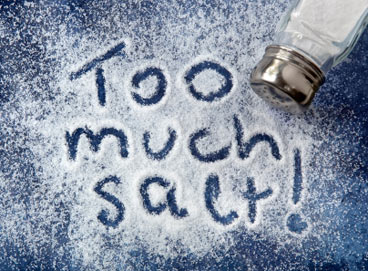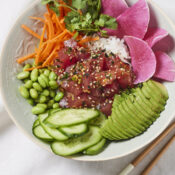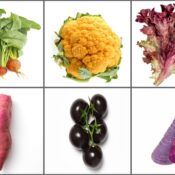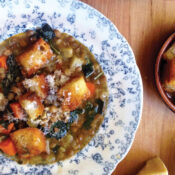What does sodium do anyway? In small doses, it balances body fluids, helps transmit nerve impulses, and affects the contraction and relaxation of muscles. Most studies suggest a daily intake between 1,500 and 2,400 mg. (During 2005-2006 the estimated average intake of sodium for persons in the United States age 2 years and older was 3,436 mg per day!) When levels become too high, your kidneys struggle to eliminate enough sodium, and it begins to accumulate in your blood. Now your heart is working harder to pump blood through your vessels, causing pressure in your arteries.
The Palo Alto Medical Foundation suggests the following alternatives to high sodium foods. For labeled items, select foods that are 5 percent or less of the Percent Daily Value for sodium.
Don’t Get Smoked
Avoid: Smoked, cured, salted, and canned meat, fish and poultry
Suggested Alternatives: Unsalted fresh or frozen beef, lamb, pork, fish, and poultry
(Three ounces of tuna canned in water contains 287 mg of sodium, while three ounces of fresh tuna cooked with dry heat contains 42 mg of sodium.)
The Cheese Culprit
Avoid: Processed cheese and regular peanut butter
Suggested Alternatives: Low-sodium cheese, low-sodium and some all-natural brands of peanut butter
(One slice of Kraft Nonfat American Cheese contains 273 mg of sodium.)
Soup’s Out
Avoid: Canned and dehydrated soups, broths, and bouillons
Suggested Alternatives: Low-sodium canned soups (note: even lower-sodium soups are still high in sodium, so check the label), broths, and bouillons
(One cup of Campbell’s Select Minestrone Soup contains 951 mg of sodium. Now, are you crushing up crackers on that soup?)
Saltine-Free
Avoid: Crackers with salted tops
Suggested Alternatives: Unsalted crackers, rice cakes, or no salt added Melba Toast crackers
Can Not
Avoid: Canned vegetables
Suggested Alternatives: Frozen or fresh vegetables, low-sodium or no salt added canned vegetables
(One cup of canned green beans contains 622 mg of sodium.)
If It’s in the Bag
Avoid: Salted snack foods
Suggested Alternatives: Unsalted tortilla chips, pretzels, potato chips, and popcorn. If these items are not available, try popping your own popcorn, baking your own pita chips, or making homemade potato fries by roasting potato wedges with a little bit of olive oil.
(Researchers found that movie theater popcorn can contain up to 1,500 milligrams of sodium.)
P.S. An average pickle spear has 306 mg of sodium.
Become a Saturday Evening Post member and enjoy unlimited access. Subscribe now




Comments
The best way to avoid the huge salt content in prepared/frozen foods is to use fresh, and cook from “scratch.”. You are sacrificing “convenience/ease”, but you are bettering your health and extending your life. It’s a choice to make.
Hi there,
Great article for how to cut down on salt. One of the greatest ways of cutting back on salt is to make things at home yourself, from scratch. I know a lot of people will groan at the thought, but not only will you cut the sodium if you’re directly involved in your food’s production, you can usually make it for pennies on the dollar!
Take movie-theatre popcorn. I make it at home for about $1 a serving. I’ve outlined my technique here: http://www.sincerelymab.com/information/2010/05/06/secret-movie-theatre-popcorn-home
Of course, my method uses Flavocol, the salting ingredient, but made without, you still get the popcorny goodness, and can control exactly how much sodium you get.
Thanks for sharing this!